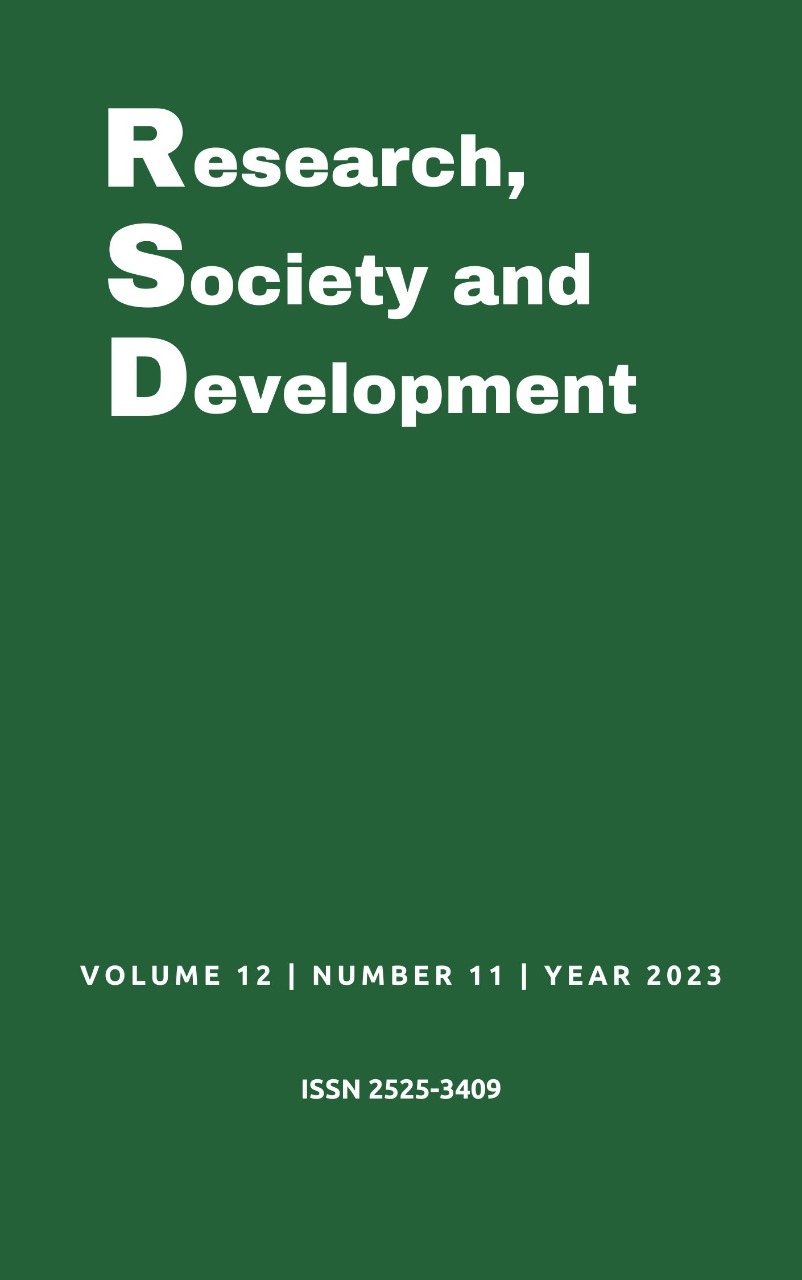Analysis of caffeine concentrations in dietary supplements
DOI:
https://doi.org/10.33448/rsd-v12i11.43707Keywords:
Food suplements, Caffeine, Pharmaceutical.Abstract
Supplements are made up of vitamins, minerals and other substances and are formulated to complement the individual's needs in case of insufficiency in a traditional diet. Caffeine (1,3,7-trimethylxanthine) is a substance that can be present in various foods naturally or inserted into them, such as food supplements. However, caffeine has stimulating effects on the functioning of the nervous system and other organs and when ingested in high doses it can cause poisoning. The aim of this article was to quantitatively analyze caffeine concentrations in dietary supplements, through UV-visible spectrophotometric reading. Quantitative and laboratory experimental research was carried out on samples collected in stores specializing in the sale of dietary supplements in the city of Belém-PA, in the period of June 2023. Three samples of dietary supplements containing caffeine in their formulation were collected. UV-Visible spectrophotometric analyzes were carried out in the UNIESAMAZ multidisciplinary laboratory. The results found in the analyzed samples show that they are within the values allowed for ingestion. However, when comparing the values of the three samples analyzed, they presented caffeine values that were different from the values specified on the labels by the manufacturer. Therefore, there is a need for greater rigor in the analysis and supervision of this type of product, as well as the presence of the pharmacist in carrying out the analyzes and in guiding the use of these products, in order to avoid poisoning and consequently risk to health.
References
Albino, S. M. (2020). Determinação de cafeína em bebidas, alimentos e medicamentos utilizando um smartphone e um aplicativo como tema gerador no ensino médio. Dissertação de Mestrado. Universidade Federal de Viçosa, MG, 68 f.
Altimari, L. R., Moraes, A. C. de, Tirapegui, J., & Moreau, R. L. M. (2006). Cafeína e performance em exercícios anaeróbios. Revista Brasileira De Ciências Farmacêuticas, 42(1), 17–27.
Antunes, A. O., & Lo Prete, A. C. (2014). O papel da atenção farmacêutica frente às interações fármaco-nutriente. Infarma. 26(4), 208-14.
Agência Nacional de Vigilância Sanitária (Anvisa). Guia para validação de métodos analíticos e bioanalíticos. Resolução-RE no 899, de 29 de maio de 2003. 15 p
Bortolini, K., Sicka, P., & Foppa, T. (2010). Determinação do teor da cafeína em bebidas estimulantes. Revista Saúde. 4(2), 23-7.
Burke, L. M. (2017). Practical Issues in Evidence-Based Use of Performance Supplements: Supplement Interactions, Repeated Use and Individual Responses. Sports Med. 2017 Mar,47(1):79-100.
Carvalho, J., De Oliveira, B. N., Machado, A. A. N., Machado, E. P., & de Oliveira, B. N. (2018). Uso de suplementação alimentar na musculação: revisão integrativa da literatura brasileira. Conexões, 16(2), 213-225.
Castanhola, M. E., & Junior, L. D. A. Aspectos farmacológicos associado ao uso da cafeína: riscos e benefícios. Jornada Cientifica e Tecnológica da FATEC de Botucatu. 11. 2022 – São Paulo.
Dombovy-Johnson, M. (2012). The effects of Taurine and caffeine alone and in combination on Locomotor activity in the rat. Colgate Academic Review, 7(1), 10.
Garcia, D. H. R., Sá, J. H. N., & Souza, R. M. (2013). A utilização da cafeína na suplementação alimentar humana: impactos nutricionais e psíquicos. Revista Funec Científica – Nutrição, 1(1),1-12.
Hamed, E. (2018). Caffeine Toxicity Following Ingestion of an Exercise Supplement by a Patient with Type 1 Diabetes. Eur J Case Rep Intern Med. Oct 24,5(10): 1-2.
Holtzman, S. G., Mante, S., & Minneman, K. P. (1991). Role of adenosine receptors in caffeine tolerance. J. Pharmacol. Exp. Ther., 256(1): 62-68.
IBGE- Instituto Brasileiro de Geografia e Estatística. (2010). Cidade e Estados Belém https://www.ibge.gov.br/
Macedo, M. G. de, & Ferreira, J. C. de S. (2021). The health risks associated with the consumption of food supplements without nutritional guidance. Research, Society and Development, 10(3), 1-9. 10.33448/rsd-v10i3.13593.
Mettzer. (2023). Pesquisa experimental: conceitos, definições e como fazer em 5 passos.
Molin, T. R. D., Leal, G. C., Müller, L. S., Muratt, D. T., Marcon, G. Z., Carvalho, L. M. D., & Viana, C. (2019). Marco regulatório dos suplementos alimentares e o desafio à saúde pública. Revista de Saúde Pública, 53, 90.
Silva, L. V., & Souza, S. V. C. D. (2016). Qualidade de suplementos proteicos: avaliação da composição e rotulagem. Revista do Instituto Adolfo Lutz, 75, (1703), 1-17.
Silva, R. S. N., & Toigo, A. M. (2016). Os efeitos do uso concomitante de cafeína e creatina nos exercícios físicos. Revista de Atenção à Saúde, 14 (47), 89-98.
Simões, H.G., & Campbell, C.S.G. (1998). Recursos ergogênicos: suplementação de carboidratos, líquidos, monoidrato de creatina, aminoácidos ramificados e cafeína. Trein. Desp., 3(2): 52-61.
Welter, S. Q. Extração e quantificação de cafeína em energéticos através de cromatografia líquida de alta eficiência e espectrofotometria. 2011. 39 f. Trabalho de Conclusão de Curso – Instituto de Química – UTFPR/Universidade Tecnológica Federal do Paraná, Paraná, Pato Branco, 2011.
Downloads
Published
Issue
Section
License
Copyright (c) 2023 Rafaella Santos dos Santos; Vanessa Feitoza Silva; Jaqueline de Paula Batista Ferreira; Marcilene Sales do Nascimento; Tatiane Ferreira de Sousa; Gleicy Kelly China Quemel; Juan Gonzalo Bardález Rivera

This work is licensed under a Creative Commons Attribution 4.0 International License.
Authors who publish with this journal agree to the following terms:
1) Authors retain copyright and grant the journal right of first publication with the work simultaneously licensed under a Creative Commons Attribution License that allows others to share the work with an acknowledgement of the work's authorship and initial publication in this journal.
2) Authors are able to enter into separate, additional contractual arrangements for the non-exclusive distribution of the journal's published version of the work (e.g., post it to an institutional repository or publish it in a book), with an acknowledgement of its initial publication in this journal.
3) Authors are permitted and encouraged to post their work online (e.g., in institutional repositories or on their website) prior to and during the submission process, as it can lead to productive exchanges, as well as earlier and greater citation of published work.


